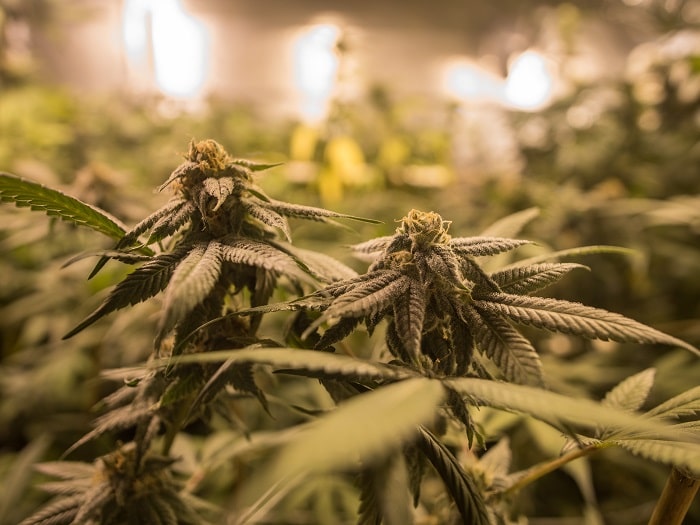Hemp has long been grown outdoors. In fact, it is one of the oldest agricultural crops.
Indoor cultivation, on the other hand, is fairly recent, having existed for less than a century.
The same is true of greenhouse cultivation, which is relatively recent.
Most of the advances in hemp production occurred during the era of indoor cultivation, and advances in technology have enabled us to expand our knowledge of the plant.
But what are the advantages of each cultivation method?
Natural vs. controlled environment
The environment is the most important factor in a successful harvest.
Indoor cultivation has the advantage of allowing the grower to control the environment.
Controlling temperature, light sources, C02 production and humidity, helps to create a stable habitat, allowing plants to grow optimally without the risk of "outside" disturbance.
However, recreating a natural environment indoors can be complicated, particularly when it comes to pest control (moths, spiders, midges, etc.).
Greenhouses are also the new trend in hemp cultivation. With an inexpensive structure, fewer lamps and less ventilation than indoors, growers can harvest year-round, at almost any latitude.
In a greenhouse, the ability to manipulate lighting and add artificial light, in addition to sunlight, is the primary advantage. The growing season can be extended into autumn and winter by adding lamps on overcast days, leaving them on longer to compensate for shorter days.
But it's not just a question of increasing the amount of energy. A well-designed greenhouse environment stays above outdoor low temperatures at night or in early spring. During the cold season, a greenhouse can easily be heated. This microclimate provides a flexibility not found in indoor or outdoor cultivation.
The sun's rays heat the air and soil, while the transparent walls keep humidity and heat in the greenhouse at optimal, adjustable levels.
Outdoor cultivation, on the other hand, requires a climate suited to the plant, i.e. good sun exposure, warm days, mild nights and low humidity.
Cost differences between indoor, greenhouse and outdoor cultivation
All three types of cultivation require significant up-front costs.
In a hemp-growing business, labor costs vary depending on whether the cultivation method is indoor, greenhouse or outdoor.
In an indoor garden, there may be several harvests a year, and there's always something to do: pruning, trellising, watering, feeding...
Outdoors, on the other hand, there's usually only one harvest a year. A large outdoor plantation may only need four people until harvest, whereas an indoor crop requires more.
The high costs of indoor farming are recouped by year-round harvests and stronger, generally higher-quality produce.
In the case of greenhouse cultivation, electricity costs are lower than for an indoor grow room. Despite this, harvests are generally more consistent than with indoor or outdoor cultivation.
As for outdoor cultivation, in view of rising energy costs and ever-increasing demand, it appears to be an excellent alternative, making it possible to offer quality products at a very reasonable price.
Hemp quality
Indoor cultivation has a reputation for producing top-of-the-range products.
The ability to control the environment and accelerate breeding has led to the creation of new varieties with multiple and varied organoleptic profiles.
The introduction of high levels of CO2 favours the growth of the buds, which do not have to fight against wind and rain, or any natural element that could damage them.
Outdoors, the flowers may not look perfect, but their aromas and effects are no less preserved.
In fact, some people prefer organic hemp grown outdoors to hemp grown indoors.
The idea that terroir is just as important as for wine, in the process of the plant's appropriation of the characteristics of the environment, does not appear to be unfounded.
So all you have to do is judge for yourself.
On your marks, get set, hemp !!!!

